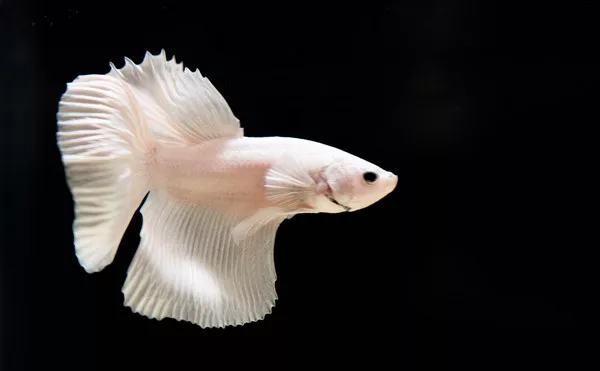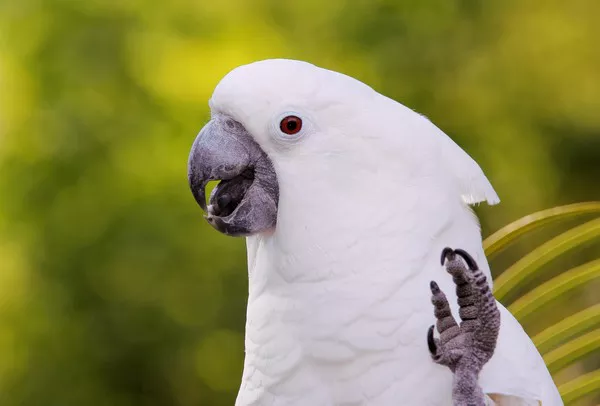When it comes to adding colorful, exotic fish to an aquarium, many hobbyists look for species that offer both beauty and a gentle temperament. One such species that consistently stands out is the Bolivian Ram (Mikrogeophagus altispinosus). Known for their striking colors, peaceful nature, and compatibility with other fish, Bolivian Rams have become a favorite among both novice and experienced aquarium enthusiasts. However, like all aquarium fish, they come with their own set of unique characteristics and behavioral traits, which can impact their peaceable nature. In this article, we’ll explore whether Bolivian Rams are indeed peaceful fish, considering their behavior, social needs, and compatibility with other species.
What Is the Bolivian Ram
The Bolivian Ram is a species of freshwater cichlid that is native to the slow-moving waters of South America, particularly the rivers and streams of Bolivia. It is often compared to the more well-known German Blue Ram (Mikrogeophagus ramirezi), which is another species within the same genus. While the German Blue Ram is prized for its bright blue coloration, the Bolivian Ram is celebrated for its golden yellow and orange hues, which make it a beautiful addition to any aquarium.
In terms of size, Bolivian Rams are relatively small cichlids, growing up to 3 inches (7.6 cm) in length. They have an elongated body with delicate fins, which are adorned with vibrant hues of yellow, blue, and red. Their peaceful demeanor makes them a popular choice for community tanks, but it is important to fully understand their behavior before introducing them to an aquarium.
The Peaceful Nature of Bolivian Rams
Behavioral Traits
Bolivian Rams are known for their peaceful and calm temperament, which sets them apart from many other cichlid species. Unlike the more aggressive cichlids, such as the Oscar or Jaguar Cichlid, Bolivian Rams tend to stay out of the way of larger or more dominant fish. They do not actively seek confrontation and are generally peaceful, especially when compared to other cichlid species. This peaceful nature makes them well-suited for community tanks with other non-aggressive fish.
That being said, it’s important to note that, like most fish, Bolivian Rams have territorial instincts, particularly when it comes to breeding. During mating seasons, they can become more protective of their chosen territory and may show signs of aggression toward other fish that venture too close. However, this behavior is usually confined to their breeding period, and once the eggs or fry are no longer a concern, their temperament returns to being calm and peaceful.
Socialization with Other Fish
Bolivian Rams are social creatures that thrive in the presence of other fish. They are not solitary animals and, in fact, enjoy the company of their own kind, especially in pairs. A pair of Bolivian Rams will often work together to defend their territory or brood. They can also coexist peacefully with other species in a community aquarium, provided the tank is not too crowded or dominated by aggressive fish.
They tend to do best in aquariums with peaceful, non-aggressive tankmates. Suitable companions include tetras, rasboras, Corydoras catfish, and other small, non-aggressive fish. Larger, more aggressive species such as cichlids from the African Rift Lakes or larger predators like piranhas should be avoided, as they may intimidate or harm the Bolivian Rams.
Tank Size and Environment
The environment in which a Bolivian Ram is kept can play a significant role in its overall behavior. While Bolivian Rams are small fish, they do require a reasonably sized tank to maintain their peaceful nature. A minimum tank size of 20 gallons (75 liters) is recommended for a small group of Bolivian Rams, though larger aquariums are always better, especially if you plan to keep other species alongside them. In a cramped space, Rams may become stressed, leading to a reduction in their peaceful demeanor and possibly an increase in territorial aggression.
As native species to slow-moving waters, Bolivian Rams prefer aquariums with gentle filtration systems, mimicking their natural environment. The tank should have a soft, sandy substrate, and plenty of hiding places such as rocks, driftwood, and live plants. Plants are particularly important as they provide both cover and opportunities for the fish to explore, further enhancing their sense of security and reducing stress.
The Importance of Water Quality
Bolivian Rams are particularly sensitive to changes in water quality, which can affect their behavior and overall health. They thrive in slightly acidic to neutral water with a pH range of 6.5 to 7.5. The water temperature should be maintained between 74°F and 80°F (23°C to 27°C), and the hardness should be kept at a moderate level (5-15 dGH).
In order to keep Bolivian Rams peaceful and healthy, it is crucial to maintain good water quality. This means regular water changes, monitoring water parameters, and keeping the aquarium free from toxic levels of ammonia, nitrites, and nitrates. Poor water quality can lead to stress, weakened immune systems, and a general decline in the fish’s behavior, making them more prone to aggression and illness.
Breeding and Territorial Behavior
While Bolivian Rams are generally peaceful, their behavior can change during the breeding season. Like many cichlid species, Bolivian Rams are known to become territorial when they are preparing to lay eggs or care for their young. A male and female pair will usually claim a small area of the tank as their territory, and they will defend it aggressively from any intruders.
During the breeding period, the male will often display more vibrant colors to attract a female. The female will then lay her eggs on a flat surface, usually among rocks, plants, or decorations. Both parents will guard the eggs and, once hatched, the fry, protecting them from any potential threats. While they are still peaceful by nature, their protective instincts can make them more territorial and aggressive toward other fish.
After the fry are free-swimming, the parents may continue to guard them, and the aggression usually subsides. Once the breeding season is over, Bolivian Rams return to their typically peaceful behavior. It’s important to remember that not all Bolivian Rams will breed in a community tank, but if breeding does occur, it’s essential to provide enough space and hiding spots for all tank inhabitants to reduce the chances of conflict.
Dealing with Aggression
While Bolivian Rams are generally peaceful, they can still exhibit aggression under certain circumstances. The most common cause of aggression is stress, which can arise from factors like poor water quality, overcrowding, or incompatible tankmates. Aggression can also result from a lack of hiding spots or territories, which can cause fish to feel threatened or insecure.
If you notice that your Bolivian Rams are becoming aggressive, consider the following measures:
- Increase tank size: Larger tanks provide more space for fish to establish territories and reduce the likelihood of conflicts.
- Ensure proper filtration: Poor water quality can contribute to stress and aggression, so make sure your filtration system is adequate for the size of the tank.
- Provide hiding places: Bolivian Rams appreciate having areas where they can retreat when feeling threatened. Adding rocks, plants, and decorations will help reduce stress.
- Monitor tankmates: Ensure that all the fish in the tank are peaceful and non-aggressive. Avoid keeping Rams with larger, more dominant species that may intimidate them.
Are Bolivian Rams Peaceful with Other Species?
As mentioned earlier, Bolivian Rams are peaceful fish, but their behavior toward other species depends on the environment and tankmates they share space with. In a well-maintained aquarium with compatible species, Bolivian Rams are generally non-aggressive and cohabit peacefully with other fish.
Compatible Tankmates
Here are some species that typically do well with Bolivian Rams:
- Tetras – Species like the neon tetra or rummy-nose tetra are small, peaceful, and non-aggressive, making them ideal companions for Bolivian Rams.
- Corydoras Catfish – These bottom-dwelling catfish are peaceful and often share the same tank conditions as Bolivian Rams, making them excellent tankmates.
- Rasboras – Like tetras, these small schooling fish are peaceful and can peacefully coexist with Bolivian Rams.
- Livebearers – Guppies, mollies, and platies are peaceful fish that do well in community tanks with Bolivian Rams.
Species to Avoid
To maintain peace in the tank, avoid keeping Bolivian Rams with:
- Large cichlids – Many large South and Central American cichlids, such as Oscars, Jack Dempseys, and Jaguar Cichlids, are highly aggressive and territorial. These fish may intimidate or harm Bolivian Rams.
- Aggressive species – Fish like bettas, some species of barbs, and large catfish can display territorial or predatory behavior that may stress out Bolivian Rams.
- Fast-moving species – Species such as some of the more active barbs or larger species of danios might stress out Bolivian Rams due to their active swimming behavior, making the tank environment less peaceful.
Conclusion
Bolivian Rams are generally peaceful fish that thrive in community tanks with other non-aggressive species. Their calm nature and relatively small size make them suitable for many aquarium setups, as long as the tank is adequately sized and contains peaceful companions. However, like most fish, Bolivian Rams can exhibit territorial aggression during breeding seasons, though this is temporary and typically not a cause for concern if proper tank conditions are provided.
By maintaining good water quality, providing hiding places, and ensuring compatibility with other tankmates, Bolivian Rams can live in harmony with other fish and remain the peaceful, beautiful addition to your aquarium that they are known to be.
Related Topics:




















